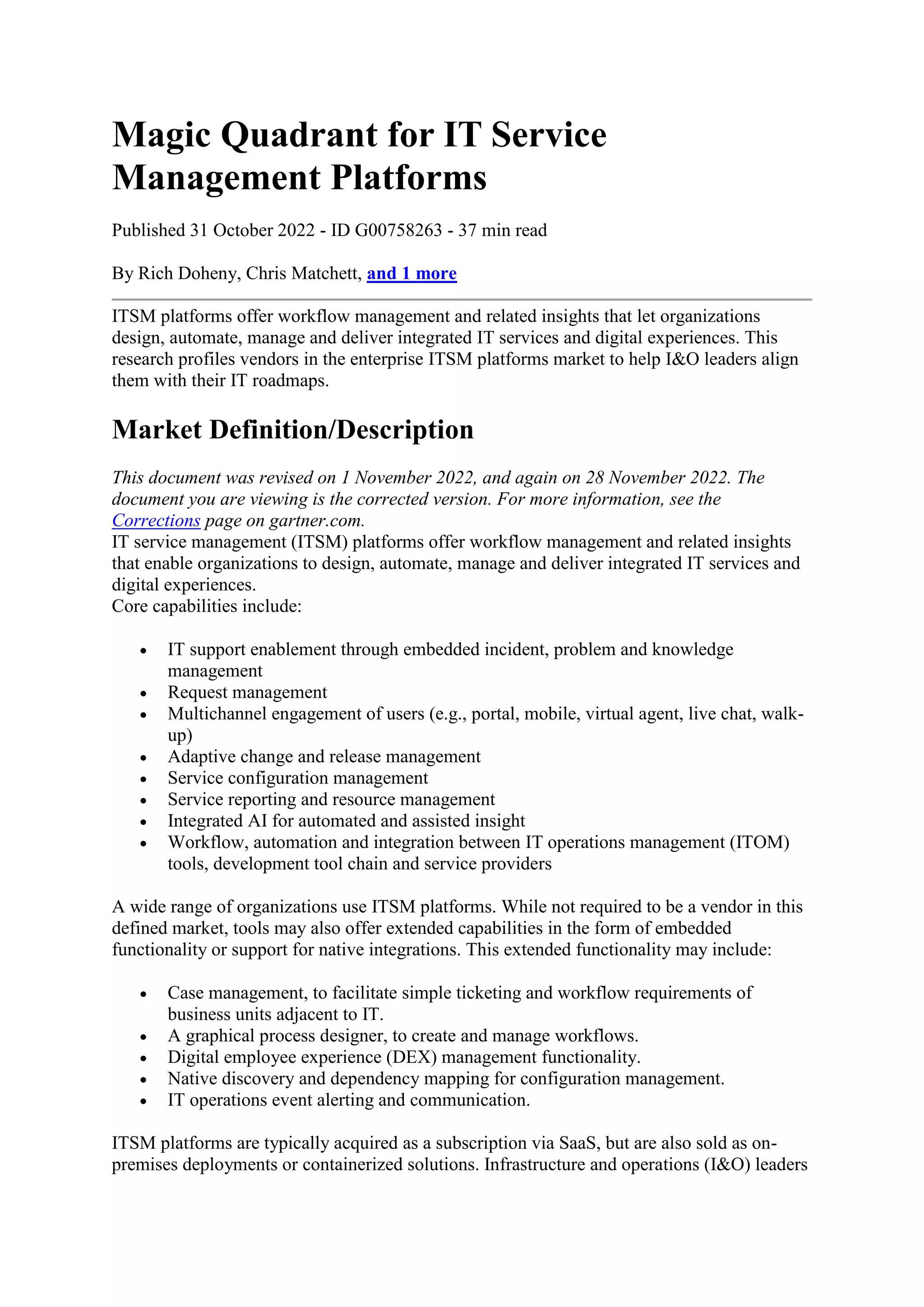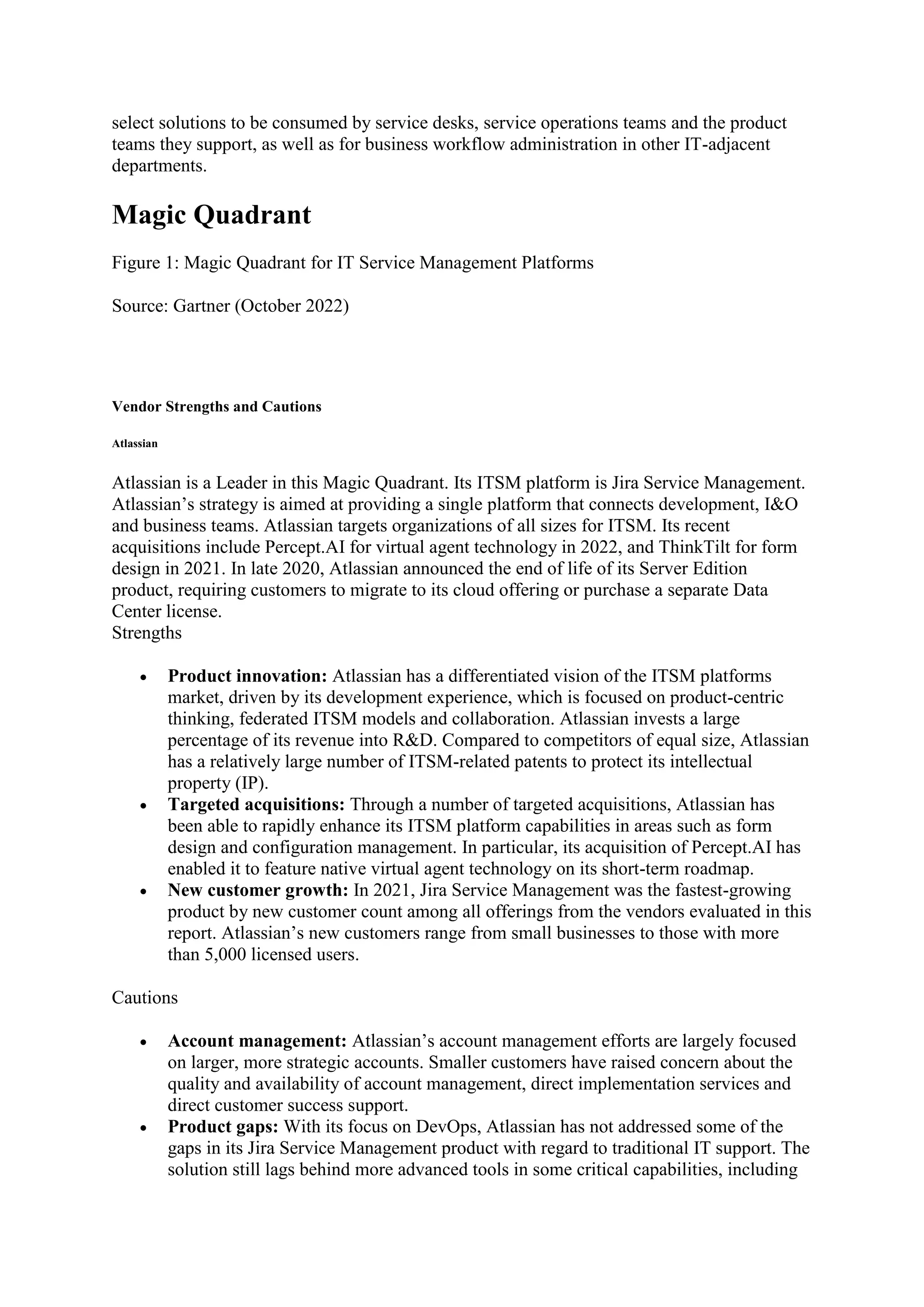This document provides an overview and evaluation of several leading vendors in the IT service management (ITSM) platforms market, including Atlassian, BMC, and EasyVista. It examines each vendor's product offerings, strategies, strengths, and cautions. Key information includes Atlassian's focus on providing a single platform for development, operations, and business teams; BMC's capabilities for mature service operations and its global enterprise experience; and EasyVista's targeting of the midmarket and specific verticals through newly acquired capabilities and customer initiatives. The document is Gartner's Magic Quadrant report on ITSM platforms published on October 31, 2022.



















